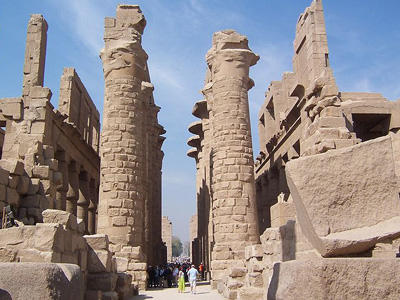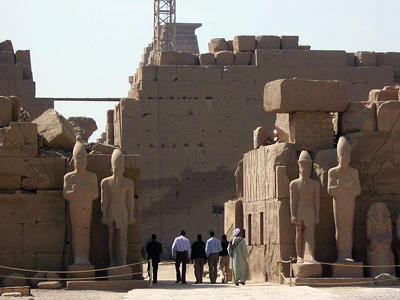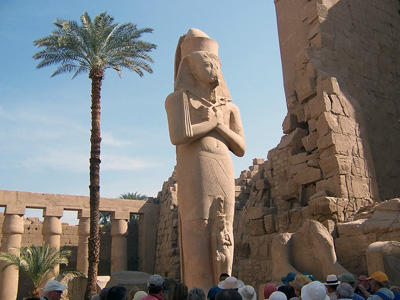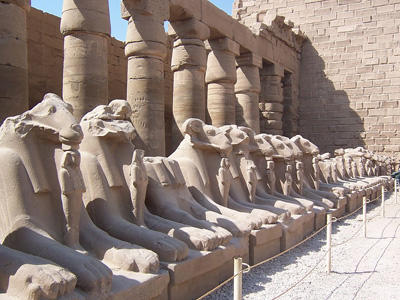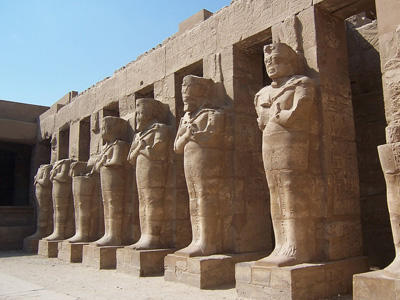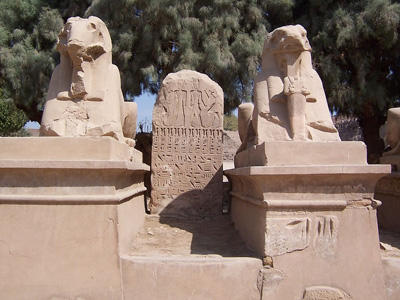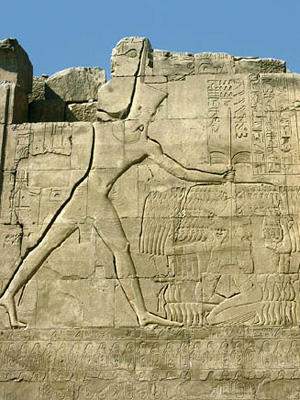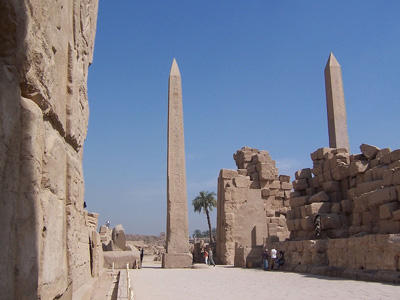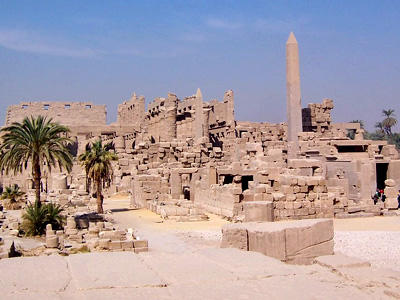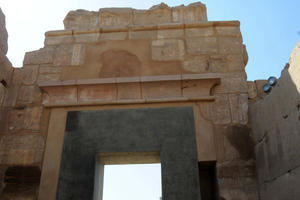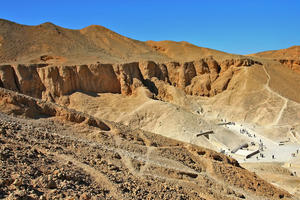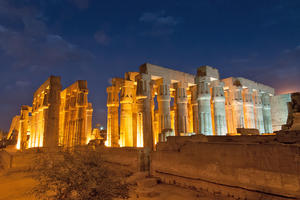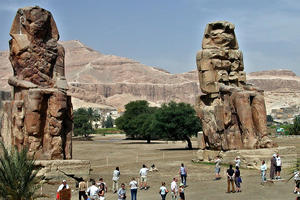Karnak Temple
Site History and Significance
The Karnak temple complex at Luxor developed over more than 1,000 years, principally between the Twelfth and Twentieth Dynasties. It was, at its peak, the largest and most important religious complex in ancient Egypt. The most significant structure, and the largest religious building ever built, is the Temple of Amun-Ra, considered to be where that god lived on earth with his wife, Mut, and son, Khonsu, who also have temples at the site. The Temple of Amun-Ra is particularly famous for the vast Hypostyle Hall constructed during the reign of Seti I. After Memphis became the new dynastic capital, many of Luxor’s temples declined in importance. In later centuries, Ptolemaic rulers and Coptic Christians altered parts of the complex for their own uses.
Challenges to Conservation
The buildings were in various states of ruin by the time they were encountered by Napoleon’s scholars and archaeologists in the early nineteenth century. Over the last century, a rising water table and chemical degradation associated with the intensification of agricultural irrigation practices in the region have created new conservation problems and accelerated damage to the stones, foundations, and columns that have remained in place since antiquity. Since many of the exterior surfaces contain relief carvings and hieroglyphs, this type of deterioration brings with it especially heavy losses to the historical record, threatening the integrity of the site and compromising scholars’ abilities to understand the meaning of these decorative elements.
How We Helped
From 2001 to 2003, WMF, through the Robert W. Wilson Challenge to Conserve Our Heritage in partnership with the University of Chicago and the American Research Center in Egypt, assisted with emergency stabilization and repairs, removal of salts and chemicals, and the development of a long-term conservation treatment plan to address ongoing monitoring and maintenance issues to improve overall general conditions at the site and hopefully slow the pace of deterioration at the complex.
Why It Matters
The Karnak Temple is a massive temple complex to which dozens of pharaohs added their own constructions. The area was in constant development and use between the Middle Kingdom (2080–1640 B.C.) and the early Christian period. The immense size of the complex, as well as its various architectural, artistic, and linguistic details make it an invaluable historical site and resource for understanding the evolution of ancient Egypt, and thus its conservation is critical. Because of its long history of construction and functionality, the gods worshipped at Karnak range from some of the earliest Egyptian deities to some of the latest, thus offering an impressive presentation of ancient Egyptian religious practices and beliefs.

